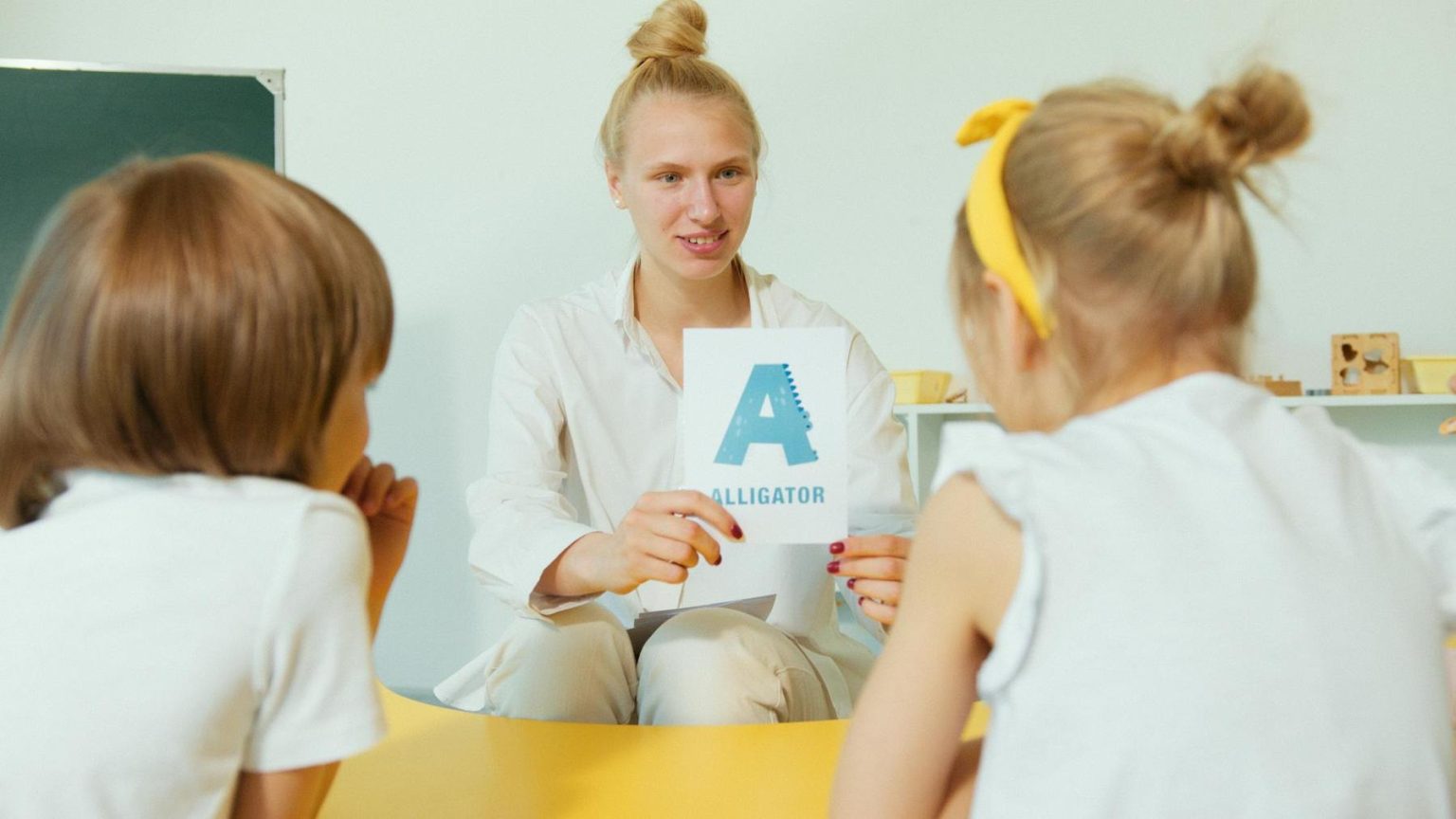
Reading Fluency: Why It Matters and Techniques to Improve It
When your child brings home their reader and struggles through each sentence—pausing awkwardly, reading without expression, or losing track of…

Every parent in Cleveland, Ormiston, and Wellington Point knows that sinking feeling when their child struggles to keep up with reading at school. What many don’t realise is that the roots of reading difficulties often trace back to early speech development—long before children even pick up their first book. The intricate relationship between how children speak and how they learn to read represents one of the most crucial yet overlooked aspects of educational development.
When speech development doesn’t follow typical patterns, it creates a ripple effect that can impact every aspect of your child’s academic journey. From the preschool years in Alexandra Hills to the primary school corridors of Thornlands and Capalaba, children are building the linguistic foundations that will either support or hinder their reading success for years to come.
The connection between speech development and reading success operates through sophisticated neural pathways that begin forming in infancy. When children learn to speak, they’re not just acquiring communication skills—they’re building the cognitive scaffolding that reading will later depend upon.
Research demonstrates that successful reading acquisition requires the integration of multiple brain regions originally evolved for spoken language. The auditory processing areas responsible for understanding speech sounds must connect with visual processing centres that recognise letters and words. This neural integration allows children to map phonemes (speech sounds) onto graphemes (written symbols), creating the bidirectional pathways essential for fluent reading.
Children with robust speech development in their early years demonstrate significantly higher reading comprehension and fluency by elementary school. Conversely, those experiencing speech difficulties face a 4-5 times higher risk of reading challenges compared to their typically developing peers. This elevated risk stems from disruptions in forming stable sound-to-letter mappings that serve as the foundation for decoding written text.
The process of learning to read literally repurposes brain networks designed for spoken language. Functional MRI studies reveal three critical areas that must work in harmony:
When speech development proceeds smoothly, these regions establish strong connections that facilitate reading acquisition. However, when speech patterns are disrupted, these crucial neural pathways may not develop optimally, creating lasting challenges for literacy development.
Phonological awareness—the ability to identify and manipulate sound units in words—emerges as the strongest predictor of early reading success across multiple research studies. This critical skill allows children to break words into their component sounds, blend sounds together, and recognise patterns like rhymes and syllables.
Consider how this works in practice: when a child in Sheldon or Birkdale can successfully segment the word “cat” into its individual sounds (/k/ /æ/ /t/), they’re demonstrating the phonological awareness that will later help them decode unfamiliar words in reading. Preschoolers scoring in the top 25% on phonological awareness tasks show reading comprehension scores significantly above their peers by Grade 3.
The relationship between phonological awareness and reading success is reciprocal—strong phonological skills support reading development, while reading instruction further refines phonological processing abilities. This creates a positive feedback loop that accelerates literacy acquisition for children with solid foundational skills.
Phonological awareness develops in a predictable sequence:
Children who master these skills early, whether they’re in Thorneside or Mount Cotton, show superior performance in learning to read. Those who struggle with phonological awareness often find reading acquisition challenging and may require additional support to develop these foundational abilities.
Australian data indicates that 2.3-24.6% of 4-5-year-olds exhibit speech sound disorders, with varying degrees of severity and impact. These disorders manifest in different ways, from simple articulation difficulties affecting specific sounds to more complex phonological delays that impact entire sound systems.
When children consistently mispronounce sounds, they develop inaccurate internal representations of how words should sound. This creates significant challenges when they later attempt to match spoken words to their written forms. For example, a child who says “tat” instead of “cat” may struggle to recognise that the letter “c” represents the /k/ sound, leading to confusion in both reading and spelling.
The severity of reading risk correlates directly with several factors:
Children with speech sound disorders often experience what researchers call “cascading effects”—initial speech difficulties create reading challenges, which then limit exposure to written language, further widening the gap between their abilities and those of typically developing peers.
Not all children with speech sound disorders develop reading difficulties. Those who maintain strong phonological awareness skills despite articulation challenges often perform comparably to typical readers on word identification tasks. This finding highlights the importance of distinguishing between speech production difficulties and underlying phonological processing abilities.
Parents across the Redlands, from Victoria Point to Chandler, should be aware of key indicators that may signal potential reading difficulties:
Early Speech Development Red Flags (Ages 2-4):
Preschool Literacy Concerns (Ages 4-6):
Early School Indicators (Ages 6-8):
| Age Range | Typical Milestones | Concerning Signs |
|---|---|---|
| 2-3 years | 200-300 word vocabulary, 2-3 word phrases | Fewer than 50 words, minimal phrase use |
| 3-4 years | Clear speech 75% of time, enjoys rhyming | Speech unclear to strangers, no interest in word play |
| 4-5 years | Can segment words into syllables, knows some letters | Cannot clap syllables, no letter recognition |
| 5-6 years | Identifies first sounds in words, attempts writing | Cannot identify initial sounds, avoids writing |
Early identification and intervention can significantly improve outcomes for children showing these warning signs. The key is recognising that speech and reading difficulties often share common underlying causes and addressing them comprehensively.
Families throughout Gumdale, Ransome, and Wakerley can implement evidence-based strategies to support their children’s speech and literacy development simultaneously. These approaches don’t require extensive training or expensive materials—they simply need consistent, intentional interaction.
Daily Language-Rich Activities:
Research from the Raine Study demonstrates that rich home language environments lead to larger vocabularies at school entry, faster phoneme segmentation skills, and higher reading scores on standardised assessments. These benefits accumulate over time, creating lasting advantages for children’s academic success.
Creating Supportive Learning Environments:
Families can establish routines that naturally promote both speech clarity and reading readiness:
The key is making language learning enjoyable and stress-free while providing rich opportunities for skill development.
Evidence-based interventions for supporting the connection between speech development and reading success focus on systematic, structured approaches that address underlying skills rather than surface-level symptoms.
Structured Literacy Approaches:
Queensland’s reading mandate emphasises systematic synthetic phonics as a core component of effective literacy instruction. This approach explicitly teaches:
Research demonstrates that 60 hours of structured literacy instruction can close reading gaps for 89% of at-risk students in Year 1. Critical elements include cumulative progression from simple to complex patterns, multisensory techniques, and the use of decodable texts that match taught phonics skills.
Integrated Speech-Language Support:
Speech-language pathologists contribute unique expertise to literacy intervention through:
Studies show that classrooms receiving speech-language pathology support achieve 23% greater literacy gains compared to standard instruction alone. This integrated approach addresses both the motor aspects of speech production and the cognitive-linguistic foundations of reading comprehension.
Technology-Enhanced Learning:
Emerging tools show promise for scaling evidence-based practices:
Pilot programmes using tablet-based phonological training have achieved 18% greater sound segmentation gains compared to traditional methods, suggesting technology can enhance rather than replace quality instruction.
The connection between speech development and reading success represents both a challenge and an opportunity for families across Southeast Queensland. While speech difficulties can create significant barriers to literacy acquisition, understanding these connections empowers parents and educators to provide targeted support that addresses underlying causes rather than just symptoms.
Children developing their language skills in suburbs from Loganholme to Wynnum, from the islands of North Stradbroke to the mainland communities of Mansfield and Springwood, all benefit from early, comprehensive approaches that recognise the intimate relationship between spoken and written language.
The evidence is clear: children who receive appropriate support for speech and language development in their early years show dramatically improved reading outcomes throughout their educational journey. This support doesn’t always require intensive intervention—often, informed families working alongside skilled practitioners can create the conditions necessary for success.
By recognising warning signs early, implementing evidence-based strategies consistently, and seeking appropriate support when needed, families can help their children build the strong linguistic foundations that support lifelong learning and academic achievement.
Warning signs can appear as early as 18-24 months through limited vocabulary, unclear speech, or difficulty following simple instructions. By ages 3-4, concerns might include problems with rhyming, little interest in books, or persistent speech that’s difficult for strangers to understand. Early identification allows for more effective intervention during critical developmental periods.
Yes, many children with speech sound disorders develop excellent reading skills, particularly when they receive appropriate support. The key factor is often the strength of their underlying phonological awareness skills. Children who can manipulate sounds mentally, even if they can’t produce them clearly, often show good reading progress with proper instruction.
Speech therapy typically focuses on improving speech sound production, language comprehension, and communication skills. Reading intervention addresses decoding, fluency, and comprehension strategies. However, the most effective approaches often integrate both, recognising that speech and reading skills share common foundations and can reinforce each other when addressed together.
The timeline varies significantly depending on the child’s age, severity of difficulties, and consistency of intervention. Some children show improvements within weeks of beginning targeted support, while others may require months or years of consistent intervention. Early intervention typically leads to faster and more substantial improvements.
By age 5, children should be largely intelligible to strangers, though some complex sounds may still be developing. Persistent errors with common sounds (p, b, m, n, t, d, k, g, f) or patterns that significantly impact communication warrant evaluation. The impact on the child’s confidence and communication effectiveness is often as important as the specific errors present.